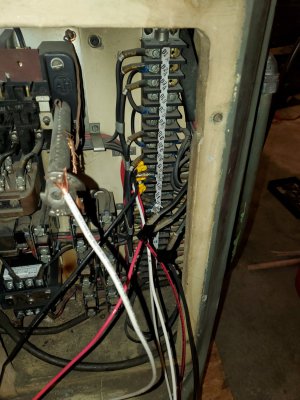Well something wasn't right. I had the grounds in a star (as well as the hots and neutrals, separately), plugged it in and had both VFDs light up as usual, turned on the spindle motor to cut a lathe QCTP base and then the Chinese VFD which hadn't been turned on (I gave up on that after not being able to figure out why they both couldn't be turned on at the same time) popped like a glass bottle and went up in smoke. The Teco VFD didn't pop but went dark so might be toast too, I'll have to check when my blood pressure comes down tomorrow.
Before all that, I had been getting stray voltage readings on the legs of the Chinese VFD even when it wasn't turned on. I was even getting voltage readings just in the air near the Chinese VFD. So I'm assuming it's ****ty Chinese VFDs and not the wiring plan...Real close to just getting a phase converter at this point (if my feed and spindle motors aren't also toast).
Edit: Checked the Teco VFD just now, it won't start up when powered so it's toast, and that Chinese VFD also threw the 30A breaker yesterday. I'd seen enough videos of people using those cheap Amazon/eBay VFDs that I figured they'd work as long as you upsized the VFD purchased to make up for their likely lies in power ratings. This was a "2 HP" eBay cheapo, so I figured it could handle the 1/2HP the feed motors would make. I think it never got to that point because it would leak voltage like crazy (see above about getting voltage readings in air) and interfere with the Teco VFD perhaps. I'm no electrician though so there's probably a better explanation. In any case, I can only hope this dogshit didn't fry the actual motors, but we'll see.
Gonna think long and hard about what to go with next, that Teco wasn't cheap and I don't know if I'd pay ~$400-500 just to see two Tecos go up in smoke (in the case that it wasn't all the fault of the Chinese VFD). The belts being so tight make the speed control almost necessary though.


